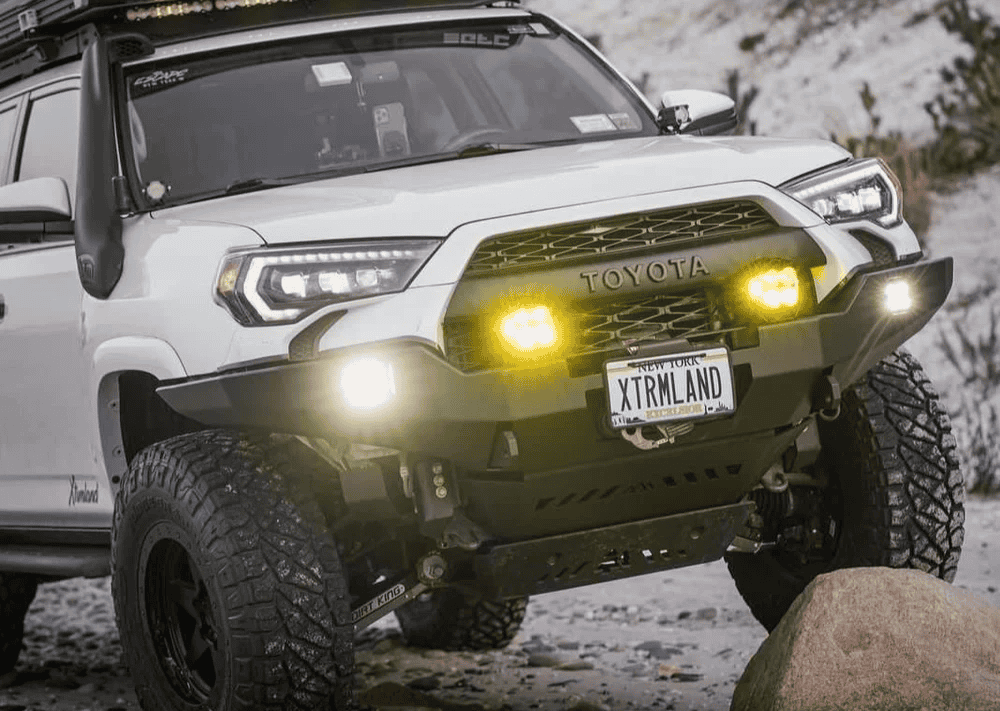Overland Vehicles

An underbody armor system is the shield between your rig’s lifeblood and the trail. It deflects hits, slides over obstacles, and absorbs impact so the oil pan, transmission, transfer case, catalytic converter, exhaust routing, fuel tank, and brake lines stay intact. On technical tracks, a single rock can end a trip. Armor turns that rock into a glancing moment.
Armor is not one piece. It is a linked set of components sized to your wheelbase and driveline. When designed correctly, panels overlap to avoid snag points, bolt to reinforced structure, and maintain cooling airflow. The goal is predictable protection that does not compromise drivability on pavement or dirt.
Underbody armor system protecting a 4x4 while clearing rocky terrain
Material choice drives how the system behaves. Steel offers superior dent resistance and a slick slide once painted or coated, at the cost of weight. Aluminum reduces mass and resists corrosion but needs smart ribbing and thickness to avoid gouging. High density polymer and UHMW panels shed mud, reduce noise, and glide on granite, often used as wear layers or secondary skins. Many comprehensive systems blend these materials to get strength where needed and silence in high contact zones.
Design details separate a plate from a system. Countersunk hardware reduces snagging. Crossmember ties spread loads instead of funneling force into sheet metal. Drain and service ports let you change oil or inspect driveline bolts without removing panels. Dimple dies and stiffening ribs add rigidity without adding mass. Heat management matters too. Exhaust clearances, reflective barriers, and venting prevent heat soak at highway speeds and on long climbs.
Fitment is not universal. A proper system aligns with the frame geometry, suspension travel, and tire size. Compression events at full bump can push plates into contact without correct spacing. Steering angle, approach angle, and breakover also influence panel shape. On modern platforms, sensor placement, aero panels, and catalytic converter design need thoughtful routing to avoid check engine lights or droning resonance.
Selecting the right underbody armor system starts with honesty about terrain, payload, and driving pace. A slow technical crawler can prioritize thicker steel around the transfer case. A long distance overland traveler may trade a few millimeters of thickness for lighter aluminum to preserve range and ride quality. If you tow or carry heavy water and gear, factor the added weight of armor into spring rates and damping so the vehicle does not sag or porpoise.
Installation quality determines performance. Mount to structural points, use factory torque specs, and apply thread locker and anti seize where appropriate. Clearance test at full droop and full compression, with steering lock to lock. Confirm that jacking points and recovery points remain accessible. After the first shakedown, re torque hardware and inspect witness marks to see where plates are contacting obstacles. Subtle trimming or adding a polymer wear strip can change how the rig slides over a ledge.
Maintenance is simple but essential. Rinse mud pockets to prevent corrosion and unnecessary mass. Inspect for cracks at mounting ears and around countersunk holes. Touch up coating after impacts. Listen for new rattles that can indicate a backed out bolt or a panel flexing against exhaust. Replace deformed hardware and worn bushings to keep the system quiet and tight.
A well planned underbody armor system should feel invisible on the road and unstoppable on the trail. That balance comes from design, fabrication, and testing on real terrain. If you are building a travel ready platform, the team at OZK can integrate protection into the broader system of suspension, tires, racks, and onboard power so nothing fights for space under the chassis.
Explore our approach to capable, reliable travel on our Overland rigs page at Overland rigs. For tailored packages and fabrication that match your driving style and platform, see our Custom overland upfit. If you want to understand how we think about builds from first conversation to handoff, read Why choose OZK Customs.
When you are ready, bring us your terrain, payload, and timeline. We will map the vulnerable zones, design overlapping protection, and install a service friendly system that keeps your rig moving when the trail gets sharp.
Ready to protect the critical parts of your rig and keep trips on schedule. Tell us how you travel and we will spec, fabricate, and install the right armor package for your platform. Share your timeline and terrain and our team will deliver a clean, serviceable setup that looks factory and performs far beyond it.
ADDRESS:
6159 E Huntsville Rd, Fayetteville, AR 72701
PHONE:
(479) 326-9200
EMAIL:
info@ozkvans.com